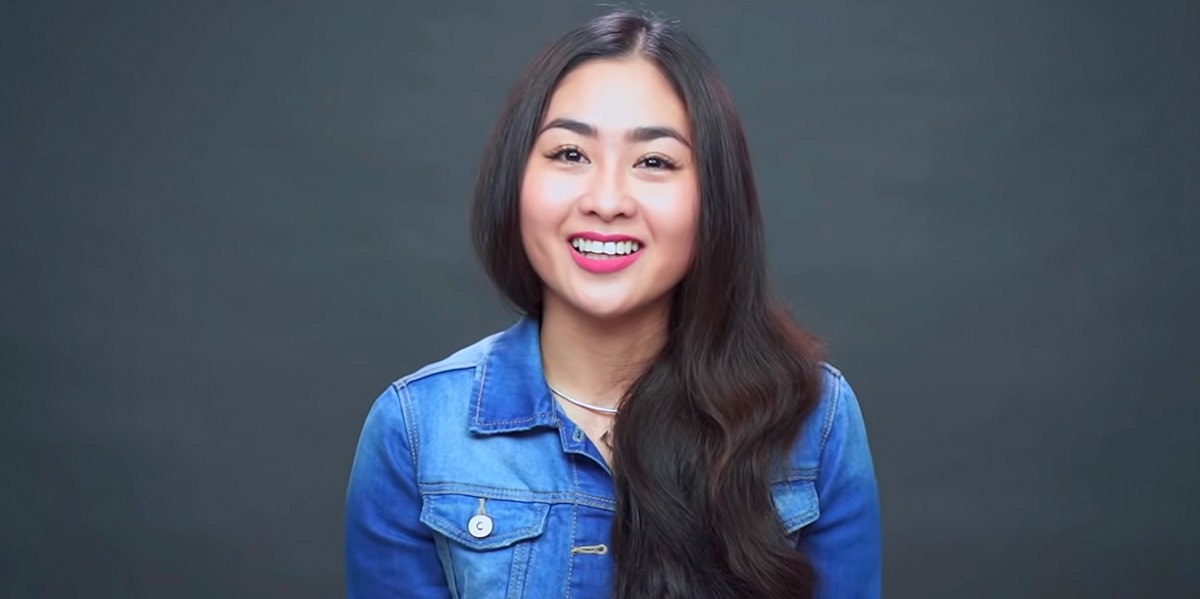How Filipinx Influencers Are Fighting Western Beauty Standards In The Philippines
Beauty standards in Filipinx culture stem from a long history of colonization.
 YouTube
YouTube When I was younger and I'd watch the Filipino channel with my mother, I always saw very pale-skinned Filipinx idols with straight, glossy hair.
As a young Filipina, I took in the messages glorifying these physical characteristics.
And I wasn’t the only Filipina taking in these messages. I went to a Catholic elementary school filled with white and Filipinx students, who always made fun of my curly, wavy hair.
The media, combined with the constant bullying I faced, caused me to hate my hair.
One day, I looked in the mirror, took a pair of scissors and cut my curly front baby hair. I ended up with two bald spots in the front of my head.
The bald spots ended up staying for a while, and I had to wear a large headband everyday for a while to cover it up.
This experience does not occur in a vacuum; so many other women of color experience this.
But for Filipinx people specifically, we are taught at a very young age that having straight, glossy hair, pale skin and a thin body is the beauty standard. The closer you are to achieving this, the more you're deemed popular and attractive.
Little did I know that these beauty standards actually have caused a string of the Filipinx population to use skin-whitening cosmetics in order to achieve the "ideal look". In fact, one in every two Filipinas will use skin whiteners.
The Philippines has a long history of Spanish and American colonization. Due to this history, dark skin is not valued in the community and light skin is widely sought after.
The Philippines has what is called a skin color hierarchy, which is an extension of colorism in many ways that also acknowledges the rising power of East Asia and the desirability of East Asians. Skin color hierarchy goes beyond the black and white binary and takes into account the complexities of colonization.
Historically, this skin color hierarchy defined who is civil and who is savage.
Because of this, Filipinx people were typically seen as savage and uncivilized to justify colonization. As researchers on Filipinx beauty standards put it, “With respect to the Philippines, ideas about skin color are influenced by Spanish colonialism, American colonialism, and the class status the Chinese have obtained during these two periods. These colonial histories construct the indigenous Filipino as savage and uncivilized as an assertion of imperialist power over the people of the Philippines.”
Colonialism set off beauty standards and skin color hierarchy and has caused discrimination against dark-skinned Filipinx.
Thankfully, Filipinx people are speaking out against beauty standards and skin whitening practices.
Take for example, One Down, a YouTube channel dedicated to Filipino representation and culture. One video talks about Filipinx beauty standards, highlighting body-shaming in Filipinx culture.
The creation of #MagandangMorenx, which translates to “beautiful brown skin”, has allowed people on social media to speak out against colorism in the Philippines.
The hashtag was created by Asia Jackson, an African-American Filipina model and actress who experienced colorism firsthand. She also has a YouTube channel where she speaks out about her experiences.
Another Filipina, Erianne Salazar, has been vocal about the importance of being unedited in photos as a model.
She embraces her skin color, body and more in different campaigns and speaks out on social media about the importance of loving yourself for who you are.
Lastly, Moreno Morena — which refers to the Italian/Portugese/Spanish feminine name derived from 'moreno,' meaning 'brown, brown-haired' is an Instagram photography project created by Juro Ongkiko to encourage appreciation of darker skin and end discrimination based on skin tone.
There are also a series of other YouTube videos as well where Filipinos speak out against beauty standards, such as: What are the Beauty Standards in the Philippines? And 100 Years of Beauty: Philippines.
Many Filipinx people are speaking out against Filipinx beauty standards and fighting against the practice of skin whitening.
It’s critical to continue speaking out against beauty standards, against colorism and against body-shaming within the community so that we as a society can accept that Filipinx people come in all shapes and sizes, and that we as a community are powerful because of this.
Angelique Beluso is a sex educator and writer who covers feminism, pop culture and relationship topics.

